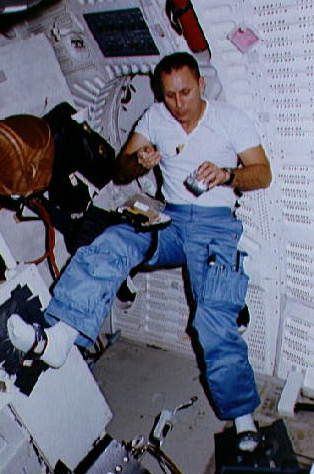Table for Six, in Space: Astronauts' Eating Habits on Multi-Year Missions to Be Studied

Six people will be embarking on a mission called HI-SEAS (Hawaii Space Exploration Analog and Simulation), as part of a NASA study set to analyze how to keep astronauts well-fed on multi-year missions to Mars or to the moon.
The study seeks to discover whether crew nutrition, food intake and contentment can be improved if crews cook for themselves. Researchers will also compare whether pre-made foods or foods prepared by the crews are enjoyed more, and whether food predilections change over time. The research team will also compile a recipe book, clock possible time, energy and water differences for preparation and clean-up between crew-cooked meals and instant ones. With luck, the act of food preparation can provide sociability and the feeling of a family, which would provide a boundless amount of mental aid for space missions taking place over the course of years.
The six people were selected out of 700 applications, and the study will be run by researchers at Cornell University and the University of Hawaii-Mānoa. Volunteers received the first batch of their training in June, where they underwent two days of food preparation training, along with team-building exercises, and scholastic preparation.
While NASA’s sealed apricot cobblers and sweet-and-sour pork presently taste good, on multi-year missions, with defined food stock, astronauts can experience “menu fatigue.” This means that astronauts can grow tired of foods that they normally enjoy, and stop wanting to eat, putting them at risk for nutritional deficiency, loss of bone and muscle mass and diminished physical capabilities. That menu fatigue can also impact the ability of crew members to gather data on other planets and atmospheres.
The training session last month taught volunteers how to cook sushi, paella, pizza, and apple pie – all without the use of fresh fruits, vegetables, meat, or dairy. In Hawaii, the volunteers will be using chiles, peanut butter, and a load of Asian spices and foods. Alcohol is not permitted by NASA.
Cooking and eating in space will provide a number of challenges. Low gravity, for instance, causes people’s heads to feel stuffy, which means that they cannot smell or taste as strongly.
Mission HI-SEAS will take place in 2013 in a barren lava field in Hawaii over the course of four months.



























